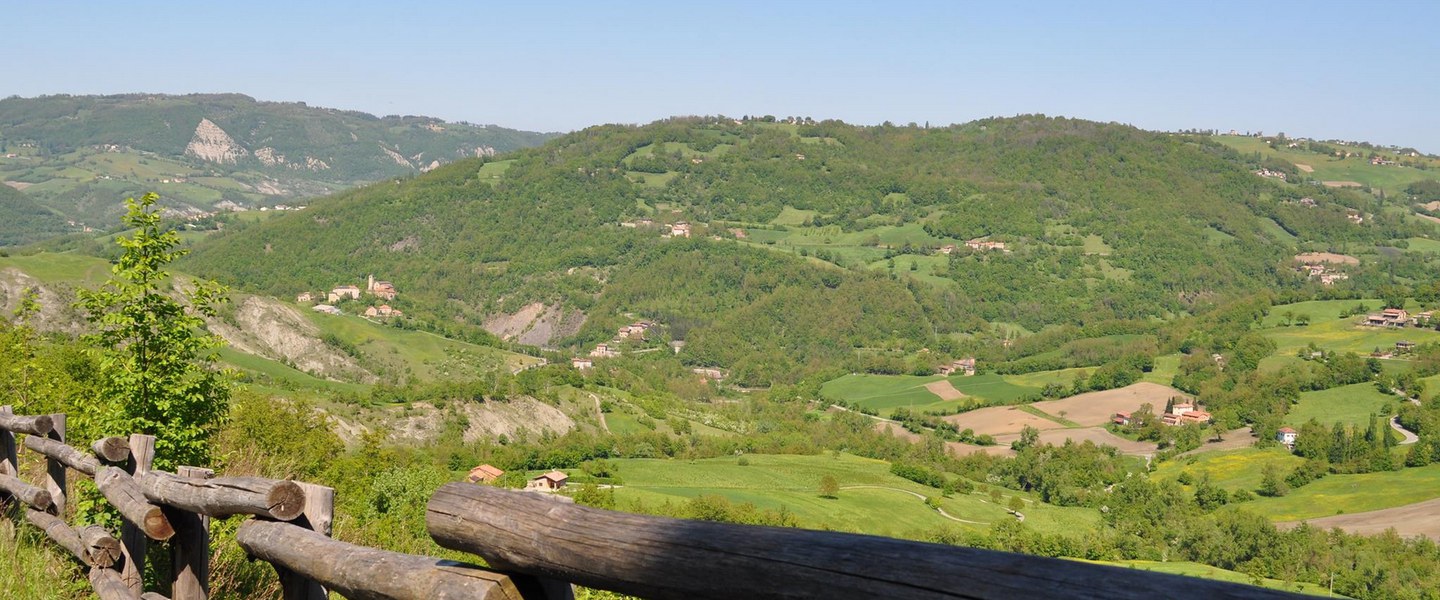Polinago
It was inhabited by ancient populations, including the Etruscans, Romans, Ligurian Friniates, Celts and Byzantines and its historic vicissitudes were mainly linked to the Montecuccoli family, its feudal lords from 1212. After them, Polinago was under the domination of the Este family until the Unification of Italy.
Why it’s worth a visit
Boasting a series of different natural environments, all beautiful, the area of Polinago has some fascinating medieval villages and other very interesting historical features. If you love nature and outdoor activities and at the same time are looking for somewhere that teaches you more about the ancient past, this is the right place for you.
Sites you won't want to miss
The parish church of the Assunta
Mentioned way back in the eleventh century and rebuilt after 1842, the parish church of the Assunta has a neoclassic façade, three naves with numerous side chapels and well-preserved altars and paintings from the eighteenth century. Admirable are the third chapel on the left with its richly decorated wooden altarpiece from 1608, framing a painting with Crucifix between the saints Francis of Assisi and Anthony the Abbot, seventeenth-century choir in walnut topped with the heraldic eagles of the Montecuccoli family coat of arms as decoration.
Outside, in a more isolated position, stands the majestic bell tower built in 1891 on the remains of a medieval castle.
Good things to eat
A typical product in this mountain area is artisan almond brittle from Frignano, still made today following an old recipe, handed down by the skilled local confectioners. A sweet treat that was even served in the dining halls of the Governor of the ancient Province of Frignano!
Nearby
A village that was probably founded by the Longobards, Gombola has old mills and historic churches. In a splendid panoramic position, it offers plenty of amazing scenic views. Points of interest are the old parish church of San Michele Arcangelo in the centre of the village, stern and majestic looking and recently restored, the oratory of the Beata Vergine del Carmine, at the entrance close to the cemetery and the old Ponte, Casa Lancelotti mills, again in the village plus Ospitaletto, not far away, with working wheels in the River Rossenna.
Brandola is a well-preserved fortified village from medieval times with the remains of an ancient castle at its centre. Set in woods of chestnut trees, it is a truly fascinating place. Points of interest are the imposing building of the ancient Podesteria, the bell tower with its seventeenth-century architecture that acted as the castle keep and the first parish church, now deconsecrated. From the castle a path through the vegetation leads to the very old spring of sulphurous water “Brandola mineral water”, discovered in 1448, considered to have therapeutic properties and very popular with the Dukes of Este and the Montecuccoli family. Finally, this is also the starting point for a trip to two bridges called Ercole (Hercules) and Diavolo (Devil) and a 33-metre long monolith over the River Lavacchiello, which is mentioned in many old tales about witches.
Palazzo di Talbignano
The summer residence of the Cesi Counts, the feudal lords of Gombola, this palazzo dates back to the early seventeenth century. It is a noble complex made up of an imposing building topped with three of its corners still topped with the remaining square towers. Inside there is a chapel dedicated to the Blessed Virgin and a spiral staircase in a cylindrical tower in the west wing.
When to come
We recommend organising your visit in late spring, summer or in early autumn when the weather is still warm and you can fully enjoy the many beautiful local sights.






